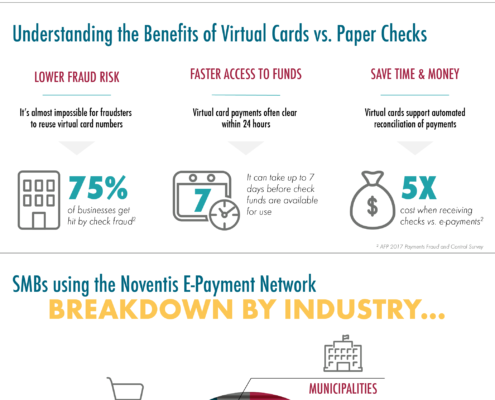Content is king, but digital channels are noisy. Even the best marketing assets can get lost in the deluge of AI-generated content. In response, B2B marketers must continually find innovative strategies to enhance online visibility and engage target audiences. Placed editorial content is often an under-utilized marketing tactic that can help your brand stand out. This blog post delves into what placed editorial is, its benefits, and how you can effectively leverage it to boost your inbound marketing programs.
What is Placed Editorial?
Placed editorial content refers to articles, features, or any form of written content strategically placed in external publications or platforms other than the brand’s owned media. Unlike traditional advertising, which is overtly promotional, placed editorials offer valuable information, insights, or stories that resonate with the target audience while subtly integrating the brand’s message or expertise.
The Benefits of Placed Editorial
1. Enhanced Credibility
By appearing in reputable external publications, you can borrow the publication’s credibility, enhancing your company’s own in the eyes of the target audience.
2. Targeted Audience Reach
Contributing articles to targeted publications that cater to specific industries or interests allows you to reach new audiences.
3. SEO Advantages
Including backlinks to your company website within the editorial or the author’s bio can improve search engine rankings by increasing your domain authority and referral traffic.
4. Brand Awareness and Thought Leadership
Sharing expertise through well-written articles can position your brand as a thought leader in the industry, increasing brand awareness and reputation.
How to Use Placed Editorial Effectively
Identify the Right Platforms
The first step in leveraging editorial content is identifying the right publications that align with your brand’s target audience and industry niche. You should spend time researching publications that your ideal customers are likely to read and hold authority within the industry.
Craft Compelling Content
An article’s effectiveness depends on the content’s quality and relevance. You should focus on creating articles that provide real value to the reader, such as industry insights, trends, case studies, or solutions to common problems. The content should be engaging, well-researched, and written in a tone that aligns with the publication’s style.
Integrate Brand Messaging Subtly
While the primary goal of placed editorial content is to provide value to the reader, it’s also an opportunity for subtle brand promotion. You should integrate your brand messaging or expertise in a way that feels natural and adds to the value of the content rather than detracting from it.
Build Relationships with Publishers
Successful placed editorial strategies often rely on building strong relationships with publishers and editors. You should focus on understanding the publication’s content needs and how their editorial can contribute value. Providing high-quality, exclusive content can help in establishing a beneficial partnership.
Measure Success
To gauge the effectiveness of placed editorial content, you must track metrics such as website traffic, engagement rates, lead generation, and SEO rankings post-publication. This data will help refine your strategy and identify the most valuable publications for future placements.
Conclusion: Improve Inbound Marketing Results with Placed Editorial
Placed editorial content is a powerful tool for enhancing your company’s online visibility, credibility, and audience engagement. By focusing on providing value through high-quality, relevant content and building strong relationships with publishers, you can effectively use placed editorials to achieve your marketing objectives. As the generative AI digital landscape continues to evolve, placing editorial content will remain a key component of successful B2B inbound marketing strategies.
If you need help establishing or executing an effective placed editorial strategy, Attain Marketing is here to help! With our expertise and deep understanding of the B2B technology marketing landscape, we can help you navigate the complexities of B2B digital marketing and develop customized strategies that align with your brand and objectives.
From leveraging content marketing to establishing thought leadership, Attain Marketing can guide you every step of the way. So, join us to tap into the power of content marketing, public relations, and audience engagement to supercharge your company’s growth!



 #3 Make your content an opportunity for customers and business partners to co-create something great. This summer, I participated in a flash mob with a local dance studio where I take classes. The event created something fun we could all engage around, escalated our brand loyalty to the business and built our sense of community. Leading up to the day of the mob, all the instructors integrated learning the choreography into their classes so that on mob day we became part of a surprise experience at one of the city’s biggest farmer’s markets. How can you create the digital equivalent of a “flash mob” for your business? Who can you get involved? Make sure everyone has skin in the game—figuratively speaking.
#3 Make your content an opportunity for customers and business partners to co-create something great. This summer, I participated in a flash mob with a local dance studio where I take classes. The event created something fun we could all engage around, escalated our brand loyalty to the business and built our sense of community. Leading up to the day of the mob, all the instructors integrated learning the choreography into their classes so that on mob day we became part of a surprise experience at one of the city’s biggest farmer’s markets. How can you create the digital equivalent of a “flash mob” for your business? Who can you get involved? Make sure everyone has skin in the game—figuratively speaking. #5 Your content may be helping your audience make sense of their world. Big brands are turning to publishing and the technology for every company to become a publisher is definitely available. So why not watch what publishers themselves are doing? The New York Times (among many others) are using social sign-on to foster new dimensions of engagement on their web site. I can see the articles my Facebook friends have recently read and from this I learn more about my particular friend’s (name obscured in this visual) enthusiasm for this publisher (plus I’m also encouraged to go read what he or she read—one article closer to the 10 free articles per month pay wall). Facebook social sign-on has led the way in B2C. For B2B, Linkedin can be a great way to gather community around your content. If you don’t have your own online community, Linkedin Groups can be an excellent channel. Brainrider.com has
#5 Your content may be helping your audience make sense of their world. Big brands are turning to publishing and the technology for every company to become a publisher is definitely available. So why not watch what publishers themselves are doing? The New York Times (among many others) are using social sign-on to foster new dimensions of engagement on their web site. I can see the articles my Facebook friends have recently read and from this I learn more about my particular friend’s (name obscured in this visual) enthusiasm for this publisher (plus I’m also encouraged to go read what he or she read—one article closer to the 10 free articles per month pay wall). Facebook social sign-on has led the way in B2C. For B2B, Linkedin can be a great way to gather community around your content. If you don’t have your own online community, Linkedin Groups can be an excellent channel. Brainrider.com has 
